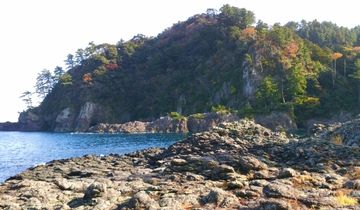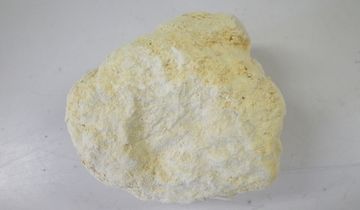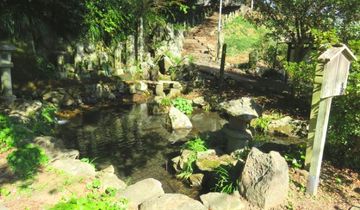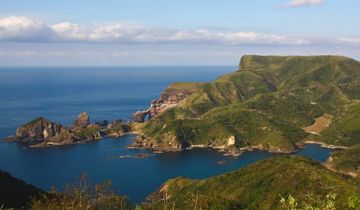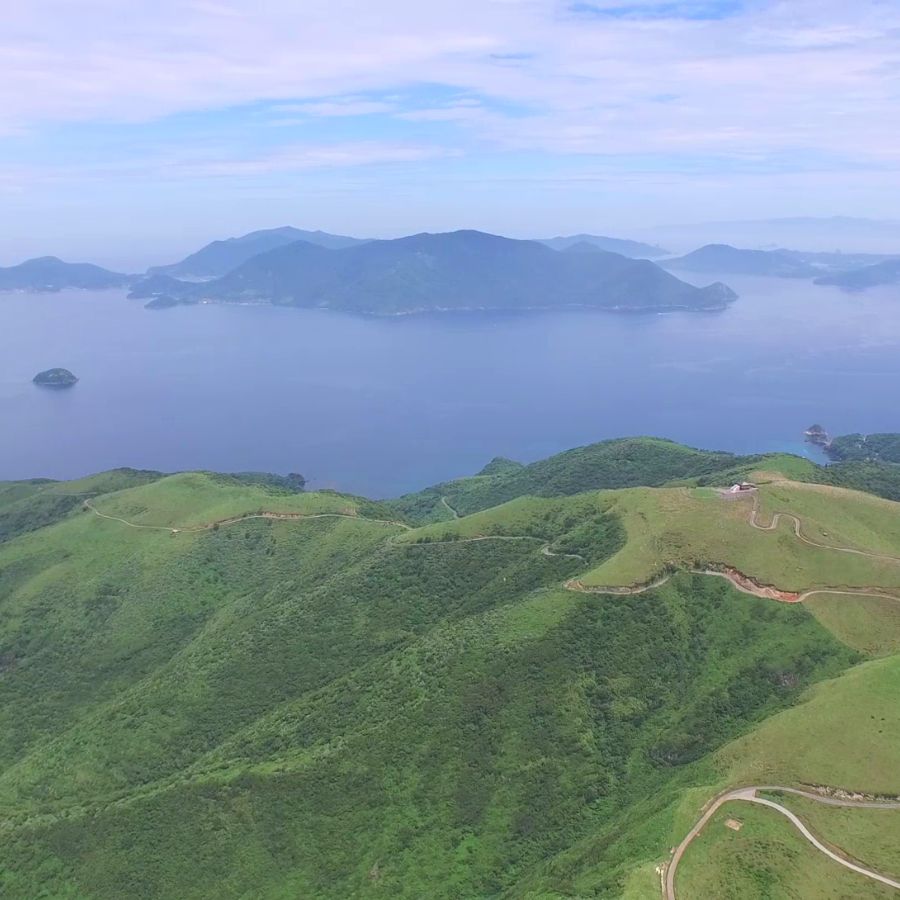
Geohistory - Terrain
The three Dōzen Islands were formed by a large former volcano that was active around 6.3–5.3 million years ago. They form a volcanic depression terrain called the Dōzen Caldera. First, the islands were created by volcanic activity, during which a depression (caldera) was formed. Later, a small volcano (the central cone) newly erupted inside the caldera to form Mt. Takuhi, and rising sea levels later brought seawater into the caldera, creating the present-day inner sea.
Thanks to the caldera terrain, with the islands acting as protection from wind and waves and Mt. Takuhi in the center serving the role of a lighthouse, the inland sea stays relatively calm even when the Sea of Japan grows rough outside. For this reason, the Dōzen Islands were once a port of call for the kitamaebune trading ships, where ships would stop and take refuge to wait for favorable weather. Even the lifestyle that has been passed down in the Dōzen Islands to the present, such as the distribution of settlements concentrated around the inner sea and the cultivation of iwagaki rock oysters, can be connected back to the caldera terrain.


